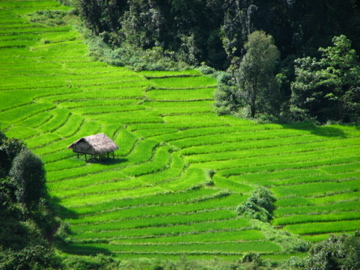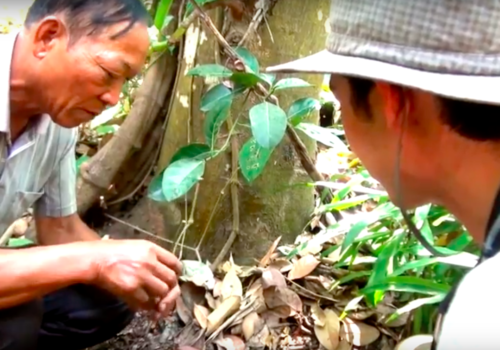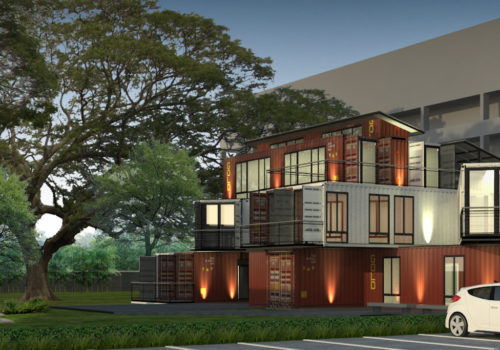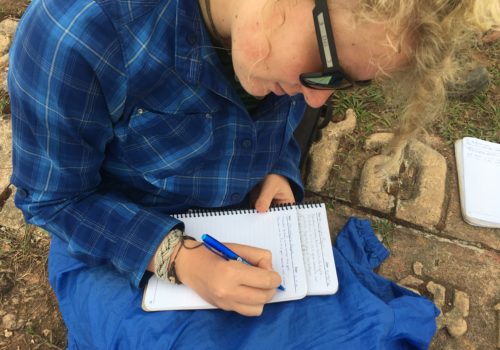
Rice fields in Mae Hong Son province
Rice is sacred in many parts of Asia, and a core part of Thai culture. Most people eat rice three times a day, and rice is used as offerings to monks, as well to the spirits. Rural villages have traditionally been organized around the production of rice, with communal labor working together to build and repair irrigation channels for the rice fields, and families working cooperatively to plant and harvest rice. Even now, as labor sharing has given way to paying wage laborers to work the fields, rice is a key part of Thai daily life and cultural identity. The most common greeting in Thai is กินข้าวแล้วหรือยัง? (gin khao laew rue yang?) which means “Have you eaten rice yet?”
Today the Asian Development Bank (ADB) released a sobering report on the economic impact of climate change on the economies of Southeast Asia, including the impact on rice:
Rice production will dramatically decline because of climate change, threatening food security. Rising sea levels will force the relocation of millions living in coastal communities and islands, and more people will die from thermal stress, malaria, dengue and other diseases.
While the report stresses global cooperation is key, Southeast Asian countries can do a lot themselves to help mitigate climate change:
Southeast Asia also has the highest technical potential to sequester carbon in the agriculture sector of any region of the world.
Further:
At the same time, many climate challenges could be more effectively countered through closer regional cooperation, particularly in the areas of water basin management, shared marine ecosystems, extreme weather events and the containment of infectious diseases.
While sobering, there is hope:
The basic policy message is that efforts must be made to apply all feasible and economically viable adaptation and mitigation measures as key elements of a sustainable development strategy for Southeast Asia. It also argues that the current global economic crisis offers Southeast Asia an opportunity to start a transition towards a climate-resilient and low-carbon economy by introducing green stimulus programs that can simultaneously shore up economies, create jobs, reduce poverty, lower carbon emissions, and prepare for the worst effects of climate change.
In our work in Thailand we have found that villagers are very aware of climate change, and how it is impacting their lives – from lowland rice farmers to tribal people in the mountains. The rains are shifting, the weather getting hotter and drier, and the historic cycles of the seasons are shifting.
The challenges facing Thailand are formidable, especially in the rice sector. The good news is that moving now to respond to climate change in Thailand will (as elsewhere) be cheaper than doing nothing, and will create more jobs and a more resilient and strong society.
(For more, here is the Google news feed on the ADB report. More on rice in Thailand is at Wikipedia.)



